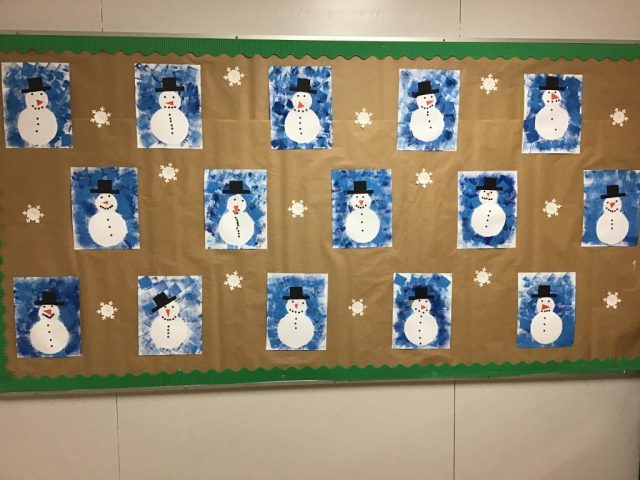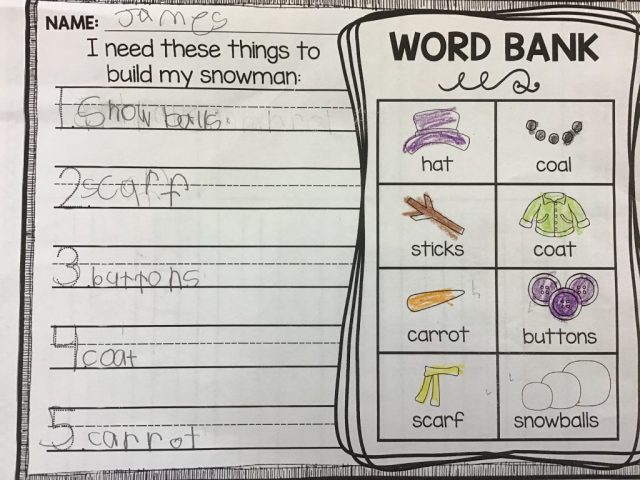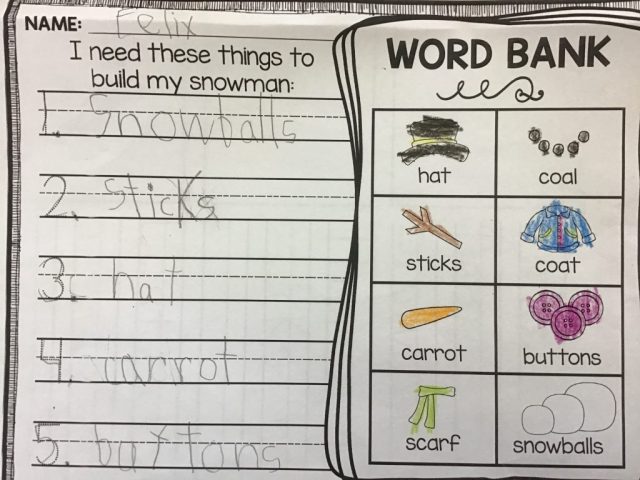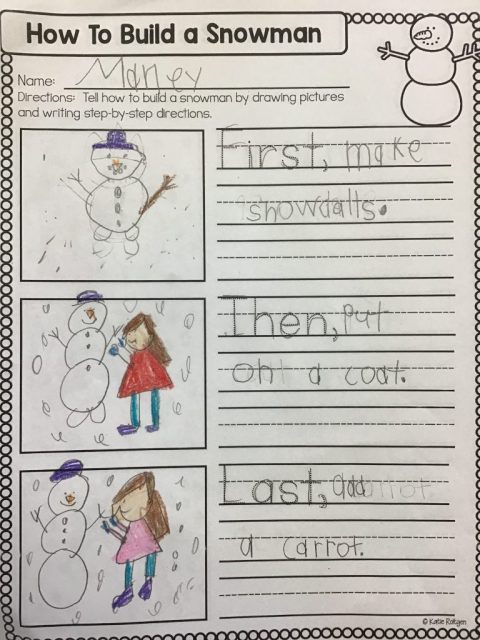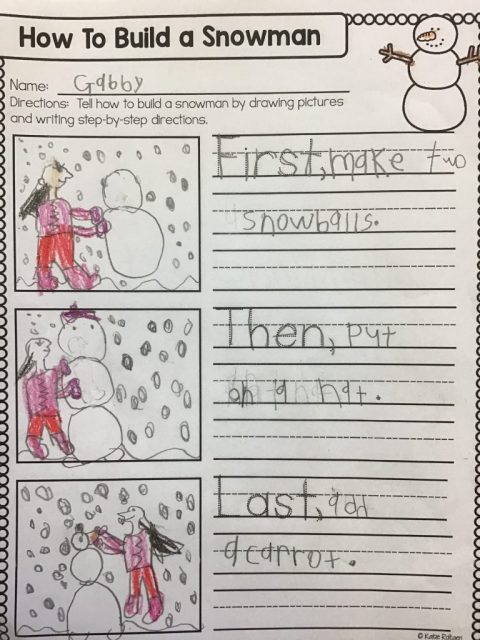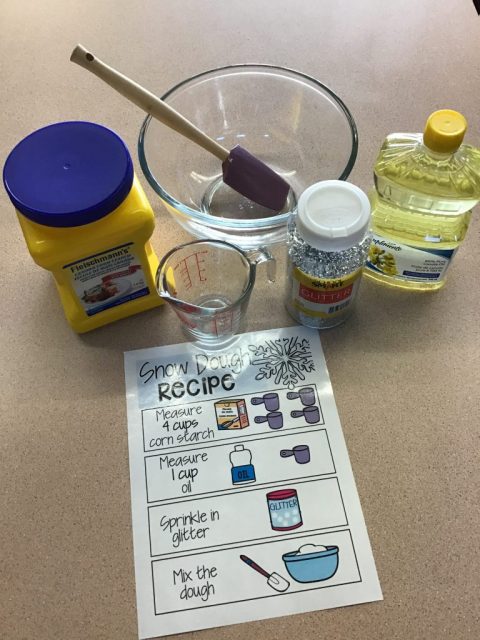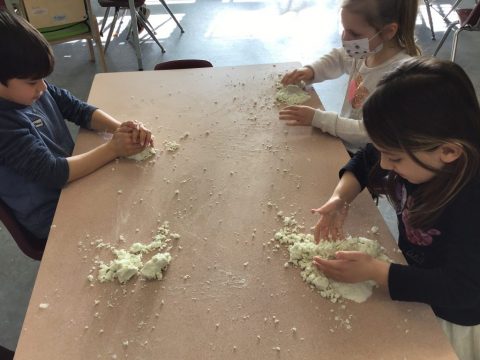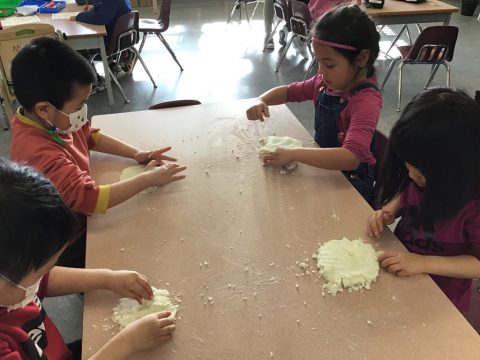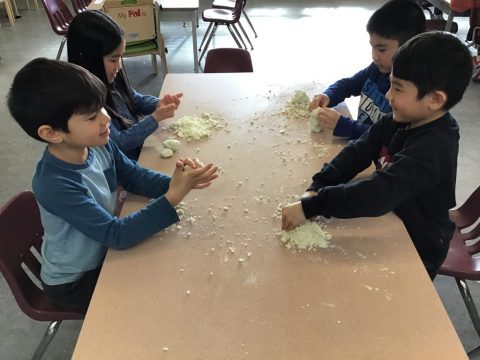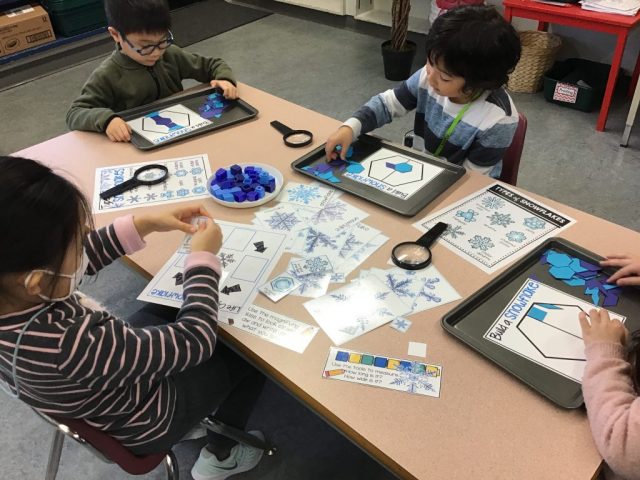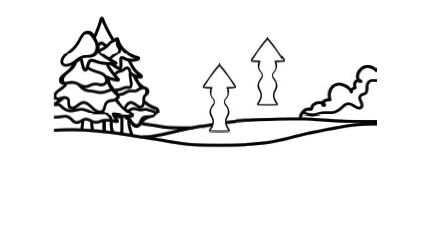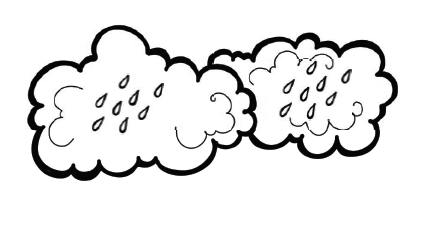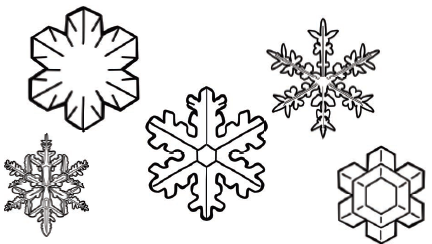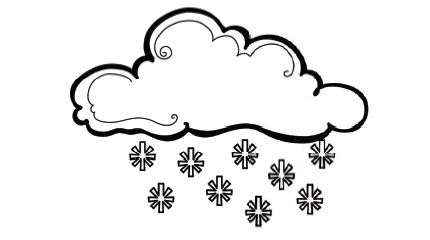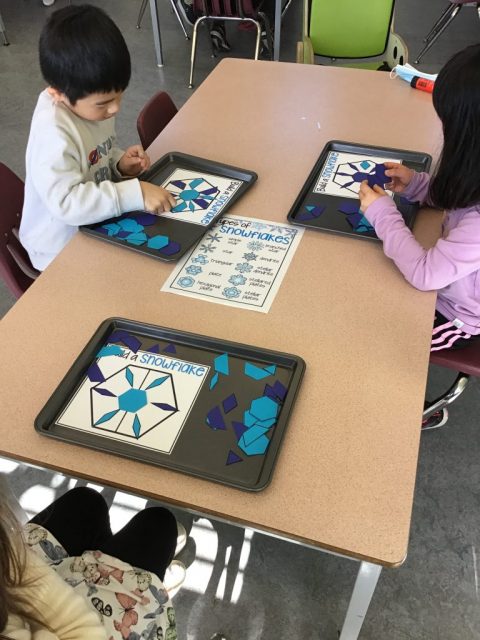We wondered . . . what do snowmen do at night? Have you ever built a snowman and discovered the next day that his grin has gotten a little crooked, or his tree-branch arms have moved? The book Snowmen At Night offers many amusing details about the secret life of snowmen and where they go at night.
We created these images based on the book. First, we cut out circles and taped them on the paper. Then, we sponged-painted the background. Last, we removed the circles and decorated our snowmen.
Check out your child’s snowman in his/her blogfolio.
